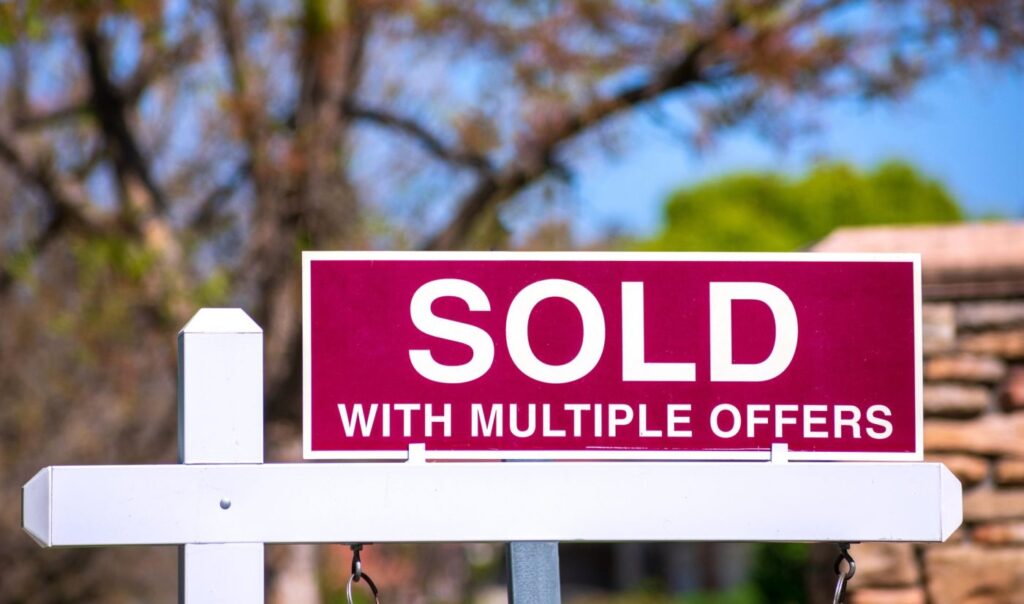
Around 6 million people will buy homes this year, and they will confront two complications: Home prices will keep going up, and so will mortgage rates.
These twin challenges might make you feel anxious about being able to afford to buy a home. The anxiety might give you the urge to hurry.
“With mortgage rates poised to increase, there is a fear of missing out (FOMO) among potential home buyers, who want to capture the lowest rates possible before they rise further,” said Odeta Kushi, deputy chief economist for First American Financial Corp., in an email.
But you might benefit by waiting. The back end of the year could bring less competition.
Here’s what experts expect to happen to mortgage rates and home prices, and why you might be rewarded if you can afford to wait to buy a home until late in the year.
Rates are upThe 30-year mortgage averaged 3.22% in the first week of January in Freddie Mac’s daily survey. The consensus prediction among housing economists had been that it would gradually rise half a percentage point in 2022, to 3.7% at the end of the year. The predictions were way off.Instead of creeping upward early this year, rates jumped like a startled cat. The 30-year mortgage was above 4% by the middle of March as high inflation prompted the Federal Reserve to raise short-term interest rates for the first time since 2018.
Rates have risen fast enough that they might catch some buyers by surprise. For example, let’s say you can afford a principal-and-interest payment of $1,500 a month. If you got preapproved in early January for a mortgage with a 3.25% interest rate, you could afford to borrow $344,700. But if you didn’t find a home until the mortgage rate reached 4%, you could afford to borrow $314,200 — a loss of $30,500 in buying power.
Prices to drop?
Mortgage rates were around or below 3% in much of 2021, and home prices skyrocketed. The median sale price of an existing home rose 14.7% last year, to $354,600, according to the National Association of Realtors.
With mortgage rates rising rapidly, you might hope that the decrease in affordability would cause prices to fall this homebuying season. That’s unlikely to happen because of a phenomenon that Kushi calls “downside sticky.”
Related Articles
U.S. pending home sales dip for 4th straight month
Orange County’s record-smashing median home price nears $1 million
Bubble watch: Southern California home prices break $700,000 barrier in 15 months
Bubble watch: California doubles housing demands to 2.5 million by 2030
Orange County home prices hit record $950,000, up $201,500 in pandemic era
“While house prices may move up easily, by ‘downside sticky’ we mean that prices won’t easily move down,” she said, explaining that “home sellers would rather withdraw from the market than sell at lower prices.”
Or slow?
Higher rates are expected to slow the pace of price increases, though. Lawrence Yun, the NAR’s chief economist, said in an email that he now expects home prices to go up 5% this year — about one-third the pace of 2021.
Others agree with Yun that home price appreciation will slow. CoreLogic, a property data provider, predicts that home prices will rise 4% this year. Keller Williams Realty’s chief economist, Ruben Gonzalez, predicts that prices will rise between 6% and 9%.
Less competition?
If mortgage rates are forecast to keep going up, and home prices are expected to continue rising (however slowly), you may wonder if there’s anything to feel optimistic about. There is — if you dislike competing against multiple bidders.
Mortgage “rates have already pushed past 4%, so we may see demand finally start to slow down right as we enter the peak season for home sales,” Gonzalez said in an email. Peak season runs roughly from May through September.
Saying that demand will slow down is a diplomatic way of saying that some would-be buyers will give up. Selma Hepp, CoreLogic’s deputy chief economist, put it this way in an email: “Higher mortgage rates have had an impact on home price appreciation by pricing out some potential home buyers.”
Assuming you’re not priced out, you might encounter a less-hostile housing market in the last few months of the year if you can afford to stay in the game. “Rising mortgage rates, all else held equal, diminishes housebuying power, which may reduce the number or intensity of bidding wars,” Kushi said.
Cooling in the fall?
Basically, if you’re ruthless, you can feel optimistic about a fall and winter with less competition from other buyers because some of them will have stopped trying. On top of that, there is the seasonal factor: You should typically encounter fewer buyers in November and December. (You’ll likely have fewer houses to choose from, though.)
And because fewer buyers are around to bid against one another in the fourth quarter of the year, median prices usually soften by a few thousand dollars. You might not even have to wait until October to get a good deal on a house. Fannie Mae’s forecast calls for the median house price to peak this year from April through June at $398,000, and then to drop to $392,000 in the third quarter (July through September) and fall to $383,000 in the final three months of the year.
Fannie Mae’s forecasting arm speculates that “many recent purchases represent buyers moving forward their plans” before mortgage rates rise even more, “meaning future demand will soften at some point.”
So maybe it won’t be disastrous if you can’t manage to find a place during spring or summer. With patience, you might encounter fewer rival bidders in the last few months of the year, even if mortgage rates are higher.
